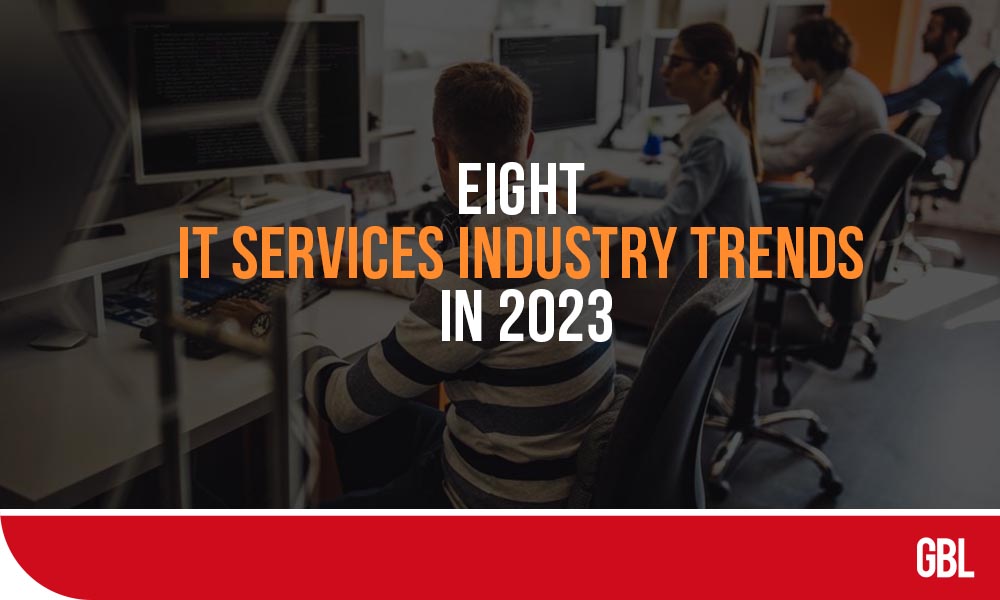Consultants, integrators, and MSPs are looking at a mixed assortment of prospects for 2023. The macroeconomic signals are several and varied.
According to updated figures from the Bureau of Economic Analysis, interest rates continue to rise, leading many to believe a recession is inevitable. But third-quarter GDP increased by 2.9%. Some businesses have started hiring freezes or laid off workers, but job openings have increased in high-demand areas like cybersecurity.
IT Services Industry Trends
Interviews with industry executives paint a complex picture, subject to potentially dramatic changes in the coming months. Below are the eight IT services industry trends.
1. Capex Avoidance Influences IT Spend
Chris Williamson, field CTO for FNTS, an MSP based in Omaha, Neb, said that the economic forces in play would highly influence IT decision-making and planning. He said that the cloud services growth would primarily maintain its present momentum as several organizations will want to limit technology-related capital spending in favor of predictable expenses.
Hexaware Technologies, a technology consulting company, headquartered in Iselin, N.J., also pointed to Capex avoidance in the cloud. Chirag Khanijau, vice president of cloud services at Hexaware, cited customers’ requirement to “optimize ruthlessly” as a key pivot point for SaaS, IaaS, and container adoption as customers seek to shed costly on-premises systems.
2. FinOps Gets More Attention
The push to optimize spills over into the Opex-oriented world of cloud computing, where service providers anticipate increasing enthusiasm for FinOps in 2023.
Paul Sussex, digital tech transformation and cloud leader at EY, mentioned FinOps as among the primary topics in customer discussions. He said organizations would require automated tools to sort out their multi-cloud settings and related consumption models.
Sussex added that as cloud deployments get more mature, people are currently looking at embedded automated policy code routines to be able to do chargebacks or cost allocation pools or monitoring usage. Automation, machine learning, AI, and all of those things relative to the FinOps agenda are very prominent.
3. Digital Transformation Continues
In 2023, Enterprise customers will continue to pursue digital transformation and IT modernization initiatives.
PwC’s third quarter Pulse survey of 657 US executives identified that 81% trust a recession will occur in the next six months. At the same time, 82% of the business leaders polled, which included CFOs, COOs, and CIOs, expressed confidence in their ability to stay on track with their transformation initiatives.
Digitalization is important for businesses looking to gain or retain a competitive edge and looms as a matter of viability for organizations.
Orlandini said that IT services firms can anticipate to find success when they help clients save or make money. The ability to eradicate legal danger by investing in cybersecurity to achieve regulatory compliance.
Although the market research firm predicts growth in IT services in 2023, Gartner expects a trend toward smaller deals versus multi-year engagements.
4. Modernization Projects Take Two Paths
Some industry executives trust the market for IT services will bifurcate into two main types of projects: optimization efforts extracting more value from what businesses already have and modernization programs preparing them for future expansion.
Williamson said that multicloud-driven transformation initiatives would remain center stage along with a renewed volume of ERP migrations to the cloud.
Kopis built an interface that lets agents use mobile devices to access and update data on the road. Service providers can expect Opex spending and transformation projects to create opportunities in 2023, although the focus will prove narrower than in previous years.
5. The M&A Pace Slows
The pace of IT services mergers and acquisitions continued effectively in 2022 but may come off the boil in 2023.
Trent Hickman, managing director at VSS Capital Partners, a private investment firm based in New York City, suggested that some segments of the MSP sector could experience a downshift in the deal-making tempo.
Abe Garver, MD and MSP team leader at Focus Investment Banking which is an M&A advisory firm with headquarters in Vienna, takes a somewhat different view. The arrival of huge private-equity firms seeking MSPs will put the bigger MSPs platforms in the spotlight and improve their valuations.
He said that the next private equity owners of these existing platforms would be larger groups demanding larger and larger assets.
In 2023, the cloud professional services sector could experience mixed results. Mature partner ecosystems surrounding cloud providers, like Salesforce and ServiceNow, will see consolidation and contraction.
The ecosystems that consists of thousands of partners will see smaller firms get picked off by huge companies, band together to gain scale or diversify into complementary ISV ecosystems like Snowflake, Databricks, and Datadog.
6. Sustainability Consulting Edges Forward
Sustainability initiatives will receive attention in 2023. However, industry executives generally agreed that environmental, social, and governance (ESG) would eventually become a consulting services and technology opportunity.
Orlandini said that the SEC mandating an ESG response from every publicly traded organization would drive some spending and some services in that area.
Williamson said that sustainability efforts will gain further importance in 2023, especially for organizations seeking investment, noting that related consulting activities will remain busy. That will be specifically the case for service providers operating in geographic regions where ESG is evolving rapidly.
IT services firms are preparing for sustainability growth in 2023 or later. In October, EY and Microsoft expanded a collaboration to develop ESG data management offerings for decarbonization and net-zero goals of clients. The relationship spans carbon tracking, reporting and supply-chain monitoring.
7. Industry Cloud Interest Continues
Industry-specific clouds burst on the scene in the past 18 months, with some services executives viewing them as important for digital transformation. Ozdemir said he expects heightened competition in industry clouds, with the best activity among hyperscalers.
Sussex focuses on financial services. In that sector, customers express interest in industry cloud use cases like high-performance computing for risk analytics, trade surveillance, or credit-rating systems.
He noted that factors holding back highly rapid uptake include concerns regarding the security and resiliency of industry clouds in a huge regulated environment.
8. Partners Cultivate Nearshore Resources
IT services providers will still struggle with hiring and wages in 2023, which could compel some companies to collaborate with developers in Central and South America. Kopis collaborates with nearshore development teams within one or two time zones of its South Carolina headquarters in Costa Rica, Mexico, and Panama.
Kurtz noted that on larger modernization projects, the hybrid US-nearshore model keeps costs down and speeds up delivery. He said industry peers had cultivated relationships with developers in Brazil and Argentina.
Barbin said all seven services providers Tercera invested in are in some stage of constructing a nearshore program, with a half-dozen primary IT centers in Latin America as the common destination. He said there is an increasing acceptance of organizations to grow and add on more talent in the region.









